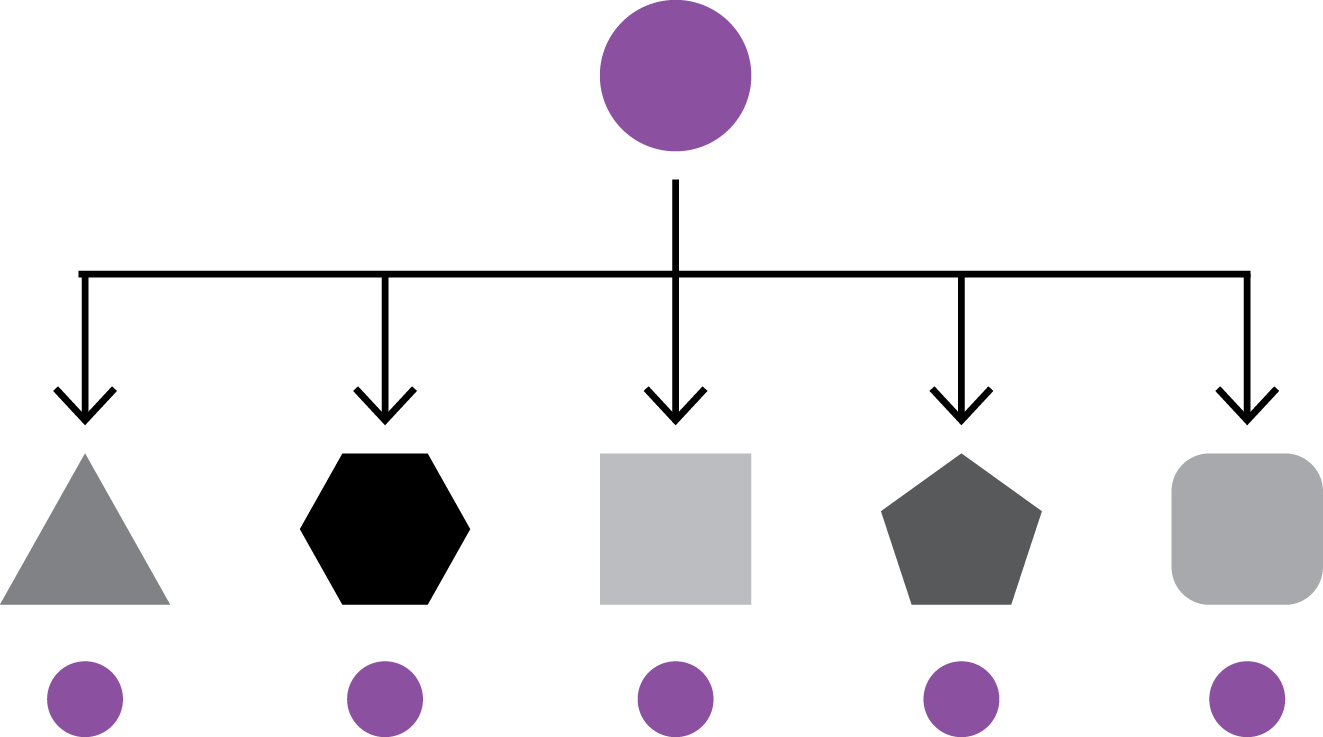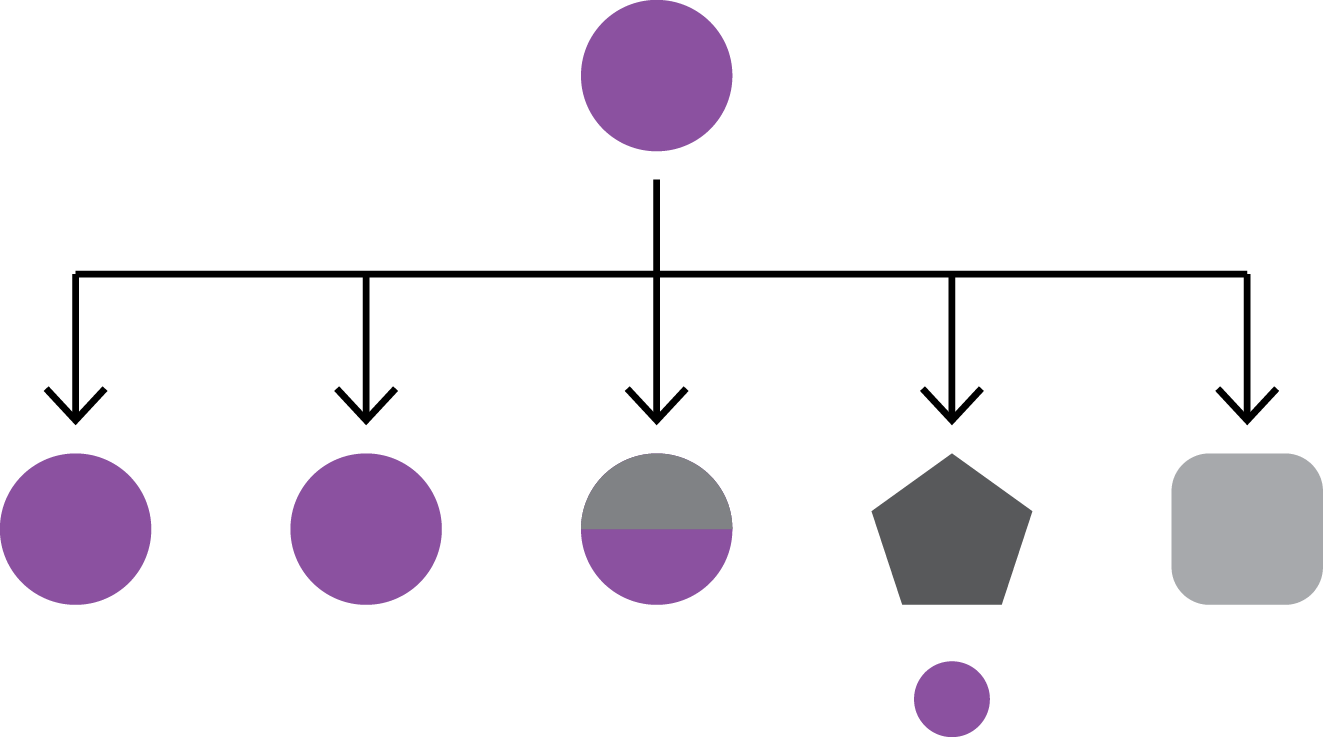Brand architecture plays a critical role in shaping how businesses structure and organise their brand portfolio. By understanding the various types of brand architecture models, companies can strategically position their brands, streamline communication, and drive business success. In this article, we’ll explore the different models of brand architecture, shedding light on their characteristics, benefits, and considerations. Whether you’re a start-up looking to establish a strong foundation or an established brand seeking to optimise your portfolio, let’s navigate the brand architecture maze together.
Monolithic Brand Architecture

In the monolithic brand architecture model, also known as a “branded house,” a single overarching brand serves as the umbrella for all products, services, and sub-brands. This approach fosters a unified brand identity, leveraging the strength, reputation, and equity of the parent brand across all offerings. The consistency and recognition associated with the parent brand can help drive customer loyalty, brand trust, and economies of scale. Examples of monolithic brand architecture include Virgin Group and Google, where the parent brand is consistently present and holds prominence throughout the brand ecosystem.
Endorsed Brand Architecture

The endorsed brand architecture model, also known as a “sub-brands” approach, features a corporate or parent brand that endorses individual product or service brands. The parent brand provides support, credibility, and shared values, while the endorsed brands maintain their distinct positioning and identity. This model allows companies to leverage the equity of the parent brand while giving flexibility and autonomy to the endorsed brands. Marriott International is a notable example of endorsed brand architecture, where sub-brands like Marriott Hotels, Sheraton, and Ritz-Carlton benefit from the endorsement and reputation of the parent brand.
House of Brands Architecture

The house of brands architecture model involves a diverse portfolio of independent and distinct brands operating under a common parent company. Each brand operates autonomously with its own brand identity, positioning, and target audience. The parent company provides strategic guidance, resources, and shared back-end operations without overshadowing the individual brands. Procter & Gamble (P&G) is a prime example of a house of brands architecture, with well-known brands like Gillette, Pampers, and Tide operating independently to cater to specific customer segments and market niches.
Hybrid Brand Architecture

The hybrid brand architecture model combines elements from multiple approaches to suit the unique needs and goals of a business. It allows companies to adapt their brand architecture based on the nature of their products, services, or target markets. This approach enables flexibility and agility, allowing brands to coexist under a unified structure while maintaining distinct identities and leveraging the parent brand’s support. Many conglomerates and diversified companies employ a hybrid brand architecture to manage their diverse offerings effectively.
Understanding the different models of brand architecture empowers businesses to make strategic decisions about how to structure their brand portfolio. Whether it’s a monolithic brand architecture, an endorsed brand approach, a house of brands model, or a hybrid combination, each model offers distinct advantages and considerations. Companies must carefully assess their brand strategy, target audience, market dynamics, and long-term goals to determine the most suitable brand architecture model.
By leveraging the power of brand architecture, businesses can optimise brand equity, streamline communication, and drive business growth. Choose the right brand architecture model that aligns with your brand strategy and positions you for success.
19 April 2023
Interested in learning more about our brand architecture expertise?
LEARN MORE




